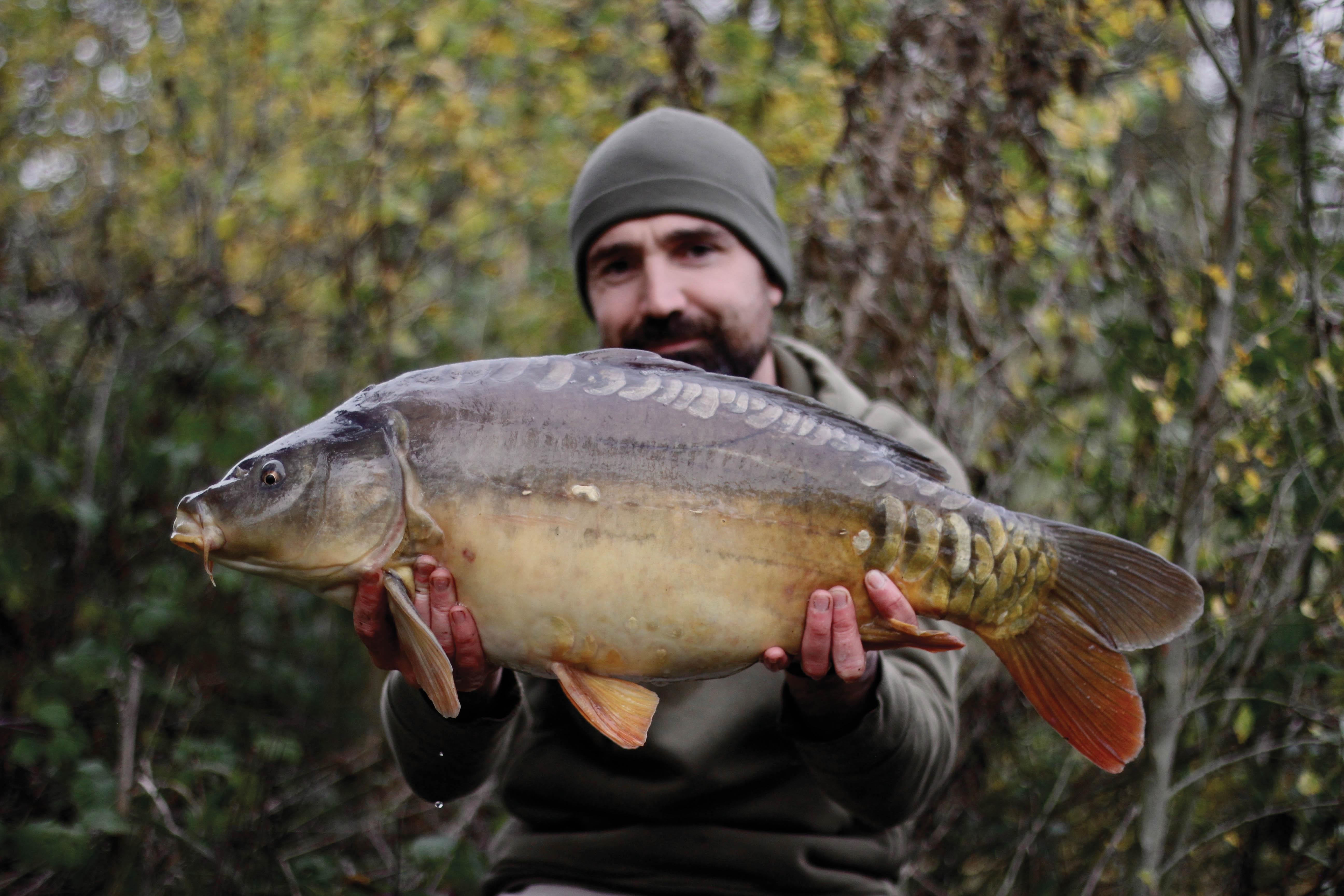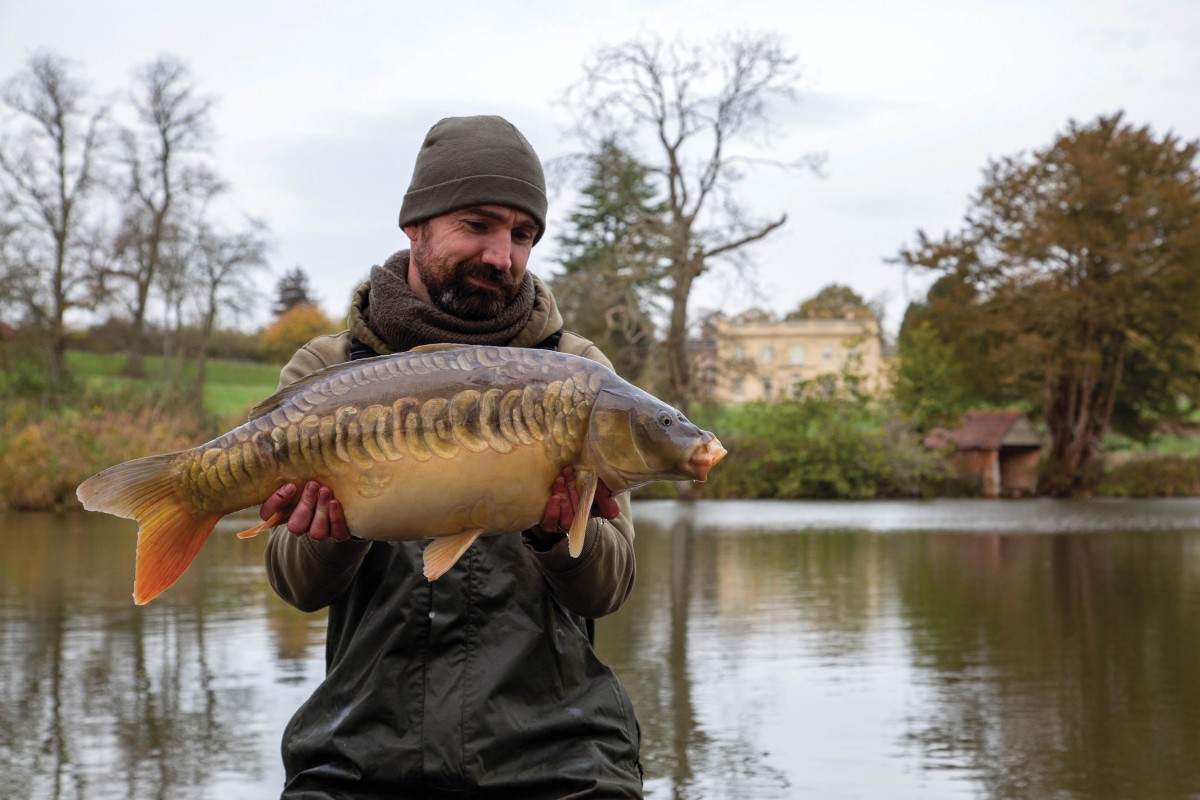
Open Access Venue: Arrow Meadow Fisheries
Stu Lennox heads back to the West Midlands, where he samples both the fishing on a recently stocked and revamped lake, and a new bankside confection...
On a bitterly cold winter’s afternoon, Tom Humphreys and I set off in our respective vehicles for the appropriately named Estate Lake on the Arrow Meadow portfolio. Having previously visited Arrow Meadow Pools during the heat of the summer, for this trip, the weather couldn’t have been more different, and neither could the venue.
ABOUT THE LAKE
The Estate Lake nestles in countryside, in the grounds of Knowle Hall, a stately home near Solihull. A Grade II* listed building, the 6,000-square foot, 3-storey mansion was built in 1850 for the then Lord of the Manor. Since that time, the house has seen many changes. Different owners made and lost their fortunes there before it finally fell into disrepair. The lake itself, overlooked by the house at the base of the hill, has always held fish. Home to a good smattering of coarse species, it was fished by local school children through the 1960s and ’70s as part of their classes.
An extensive restoration project has been ongoing at the property since 2015, with work also carried out at the lake. Having been reclaimed by Mother Nature, the water had become surrounded by overhanging and collapsed trees, and clogged with silt. The current owners opened up the dam wall, and this allowed a large amount of the silt to run off. They also removed a lot of the overhanging trees and constructed one of the islands.
About three years ago, the lake’s owners approached Arrow Meadow Fisheries and offered them the lease, which instantly, they snapped up. The Arrow Meadow team finished tidying up the lake and surrounding vegetation, removed the rest of the slit, and installed and improved pathways two years ago. They then stocked 150 C4s from a variety of well-known suppliers, including VS Fisheries, AJS Fisheries and Mark Simmonds. Another handful of fish was introduced a few weeks before our visit. An otter fence has been installed to protect the stock, and the water is now open for exclusive bookings. It hasn’t been overfished and many of the stock are yet to see the bank. It is therefore difficult to gauge their growth rates, but all fish are estimated to weigh between 15lb and 30lb.
The lake itself is around 2.5 acres in size and has two islands at one end. The four named pegs are nicely woodchipped, but remain in keeping with the feel of the water. The pathways have been gravel-lined for the convenience of visitors, but are also barked, once again in an effort to retain the venue’s natural feel. The old boathouse remains a beautiful backdrop when you’re enjoying an early morning brew and watching mist rise from the lake’s surface. Nets, mats and slings are provided, and a toilet block is tucked away in the woods near the car park. Nestled in farmland, with the Grand Union Canal a stone’s throw away, the lake offers a truly peaceful escape for those who like to get away from it all.
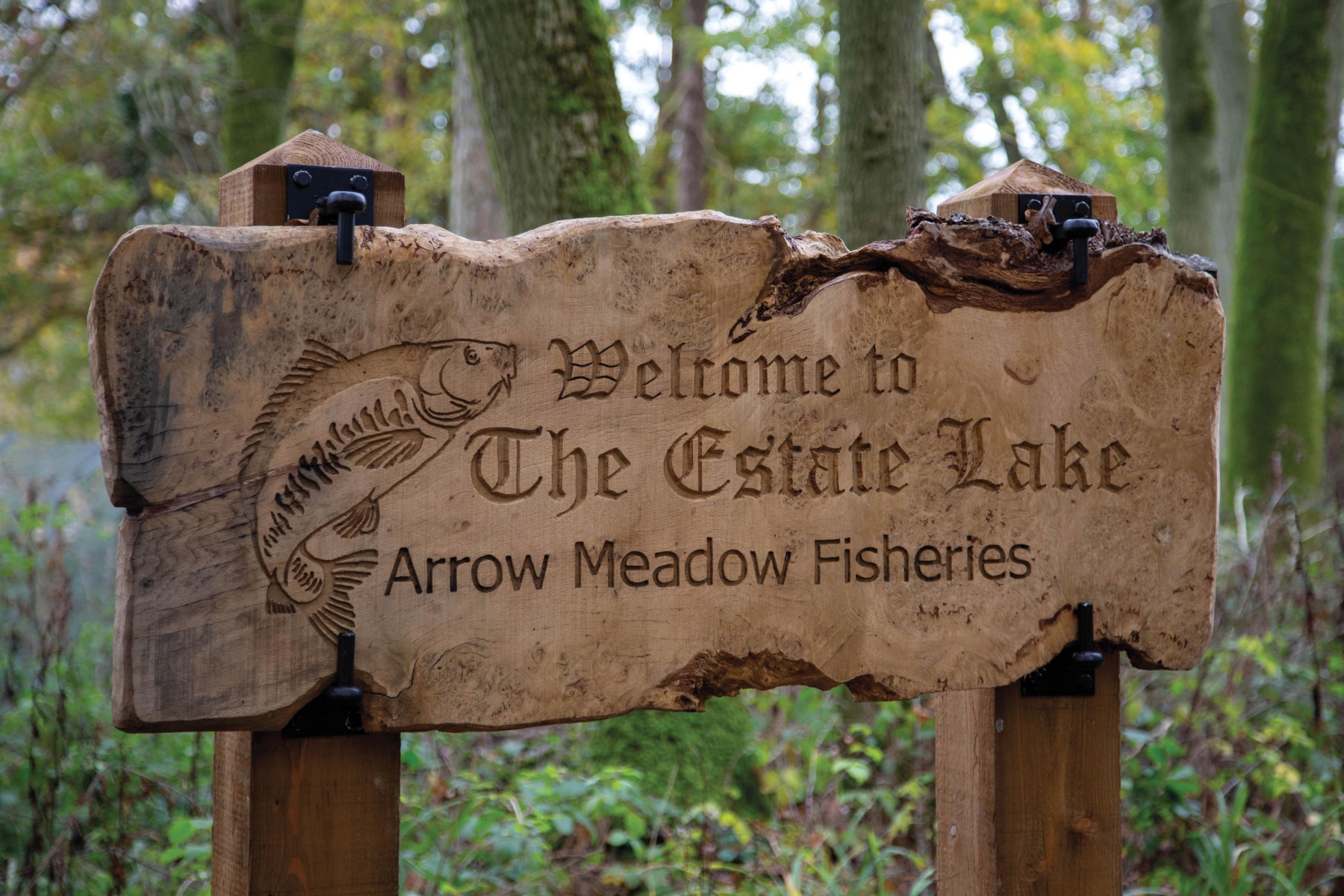
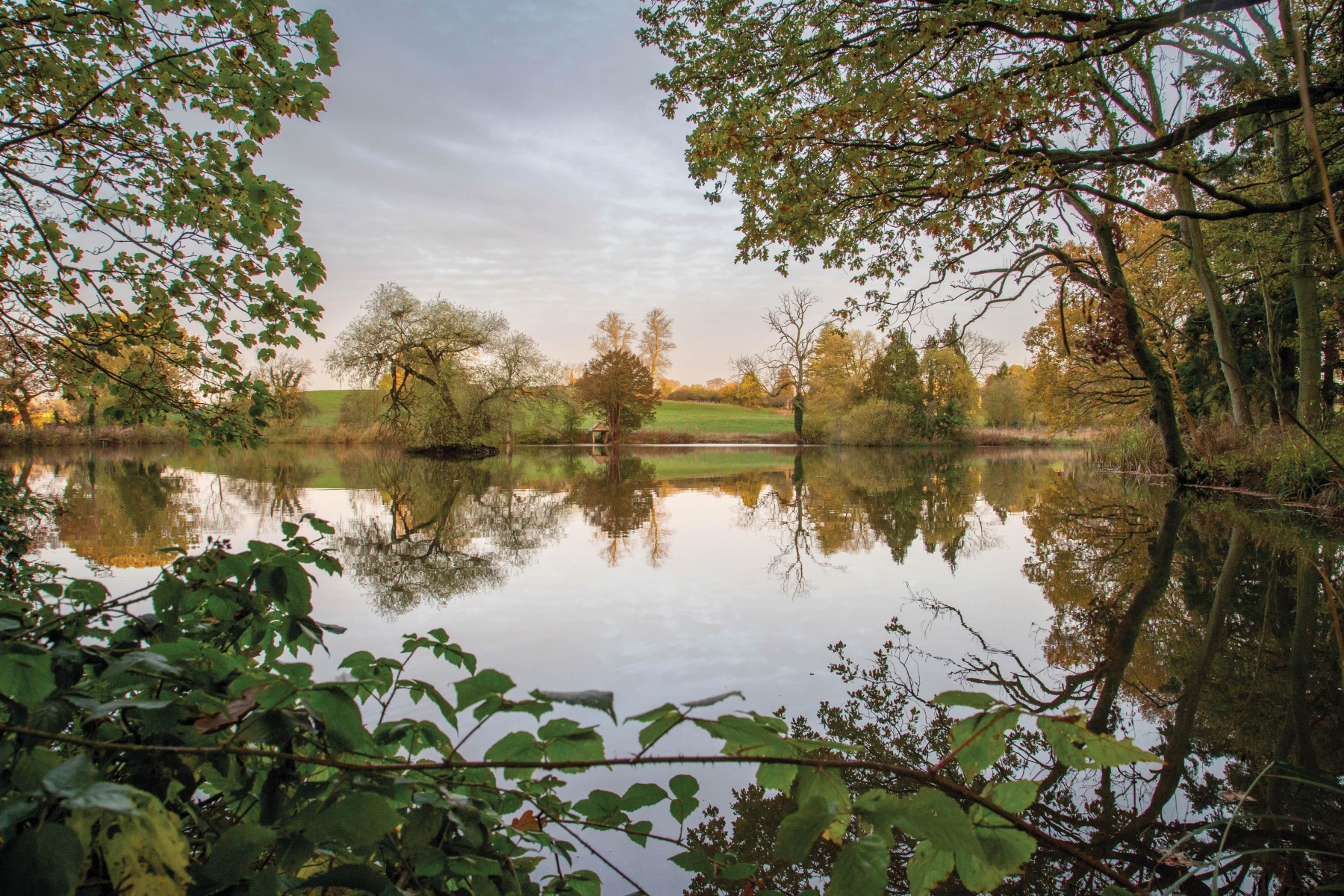
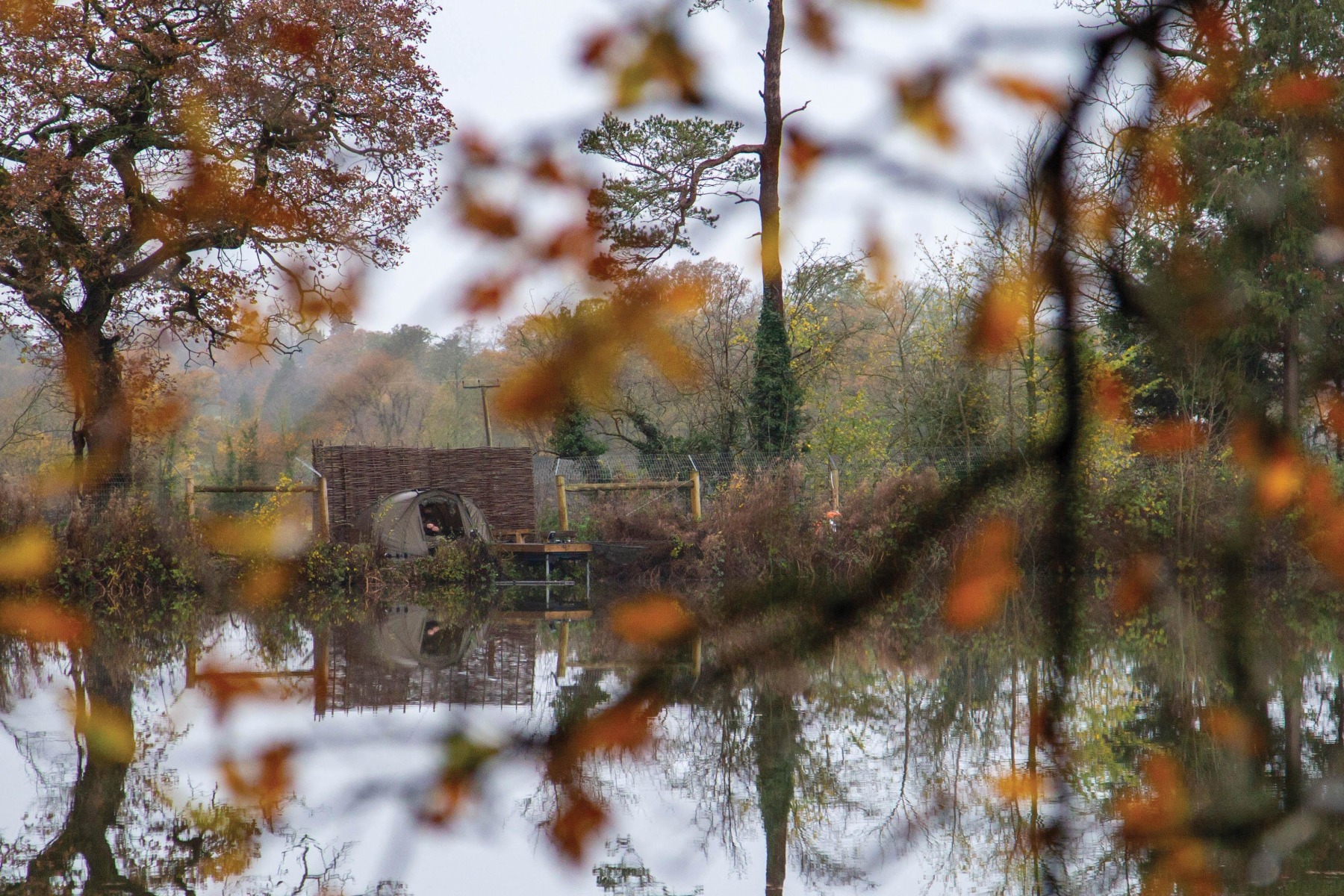
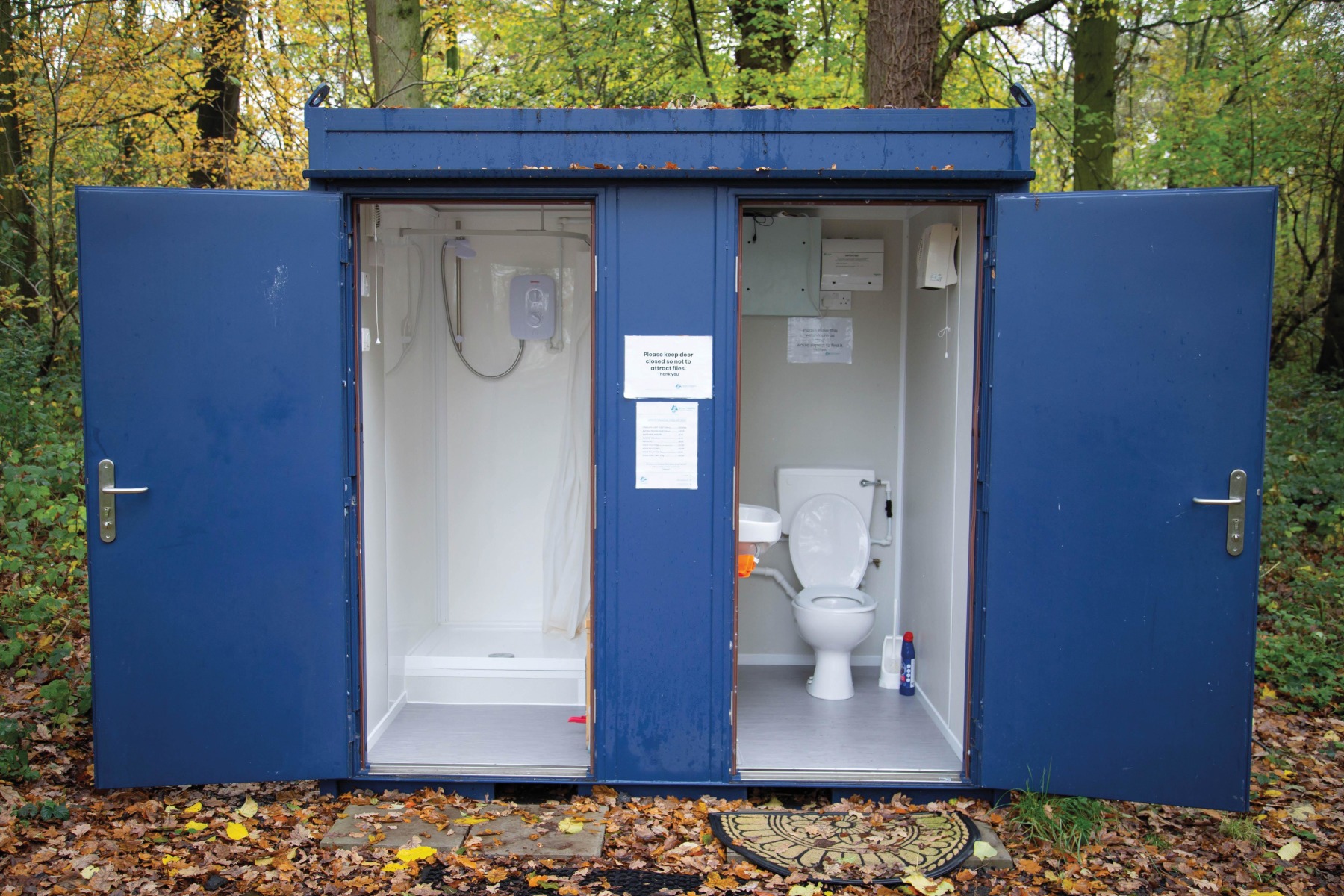
ONTO THE SESSION
With the water being available only via an exclusive booking, I didn’t have to worry about rushing to get a peg. Having worked in the morning, I left for the venue early afternoon. After arriving, I wound my way down a narrow, tree-lined track, crunching leaves beneath my feet. At the gate, I couldn’t see much of the lake, so I let myself in and went for a couple of laps. I had only about an hour of light left, but tracking them down at this time of year is so important.
Given that the venue is so small, I actually did about four laps before it got dark, but I saw nothing. All I had to go on was that it felt slightly warmer on the far bank than the one nearest the gate. That, though, could have been due to the large windbreak created behind the pegs.
In the end, I settled for a peg appropriately named Hall View. This gave me a good view of almost the entire lake, and as such, it would allow me watch for any signs of activity. Fish can be shoaled tightly at this time of year, and a single show can give away the presence of many more carp. The peg also gave me access to the only large reedbed on the lake, off to the left-hand side. Reedbeds hold on to a little more heat compared to surrounding water, and often provide shelter for carp in the winter. I considered fishing a pop-up to this feature at some stage during the session, as having a bait slightly off the deck would protect it from being tarnished by any chod around the base of the reed stems.
With nothing else to go on, I threw the brolly up and set my alarm for 2 a.m. I also set it for 4 a.m, and after listening through the night, I had a good idea of where I wanted to be fishing, having heard six shows in the darkness. Most were short, directly out in front of me, and I’d heard one either side of the island. As it got light, I had seen some bubbling down to the right-hand side, but with the water being an old estate lake, I was conscious that this may not have been caused by fish. I decided to go with two rods short, and one down to the right, where I’d seen the bubbles.
Rigs were kept simple, and once again I focussed on a maggot approach, given the time of year. I opted for a Slip-D Ronnie on one of the short rods, as the set-up had done so well at Berners Hall. I dropped the hook size of my ESP Cryogen Curve to a 6, due to the smaller stamp of fish. The hookbait remained the same: a small, homemade pink pop-up with a bunch of 8–10 red maggots. The other two rods were fished with solid bags. I had recently decided to try a new type of solid bag rig. Winter isn’t the best time to experiment, but I thought I’d give it a go, and if things didn’t go well, I could change later in the session.
The new rig I was going for was a Slip-D with a new hook, the ESP Cryogen Claw-Hammer, a wide gape, beaked-point pattern. I had a small ring swivel on the ‘D’. On one of these I mounted a 10mm wafter soaked in almond-flavoured Goo, and on the other, a single piece of plastic corn. Both rigs had a bunch of maggots flossed to the top of them to provide extra attraction. I didn’t want to use too much pellet, so put just a pinch in the bottom of the bag to protect the hook. The rest of the bag was filled with red maggot—the pellet had been heavily soaked in hemp oil, inadvertently, after the bottle leaked in my bucket!
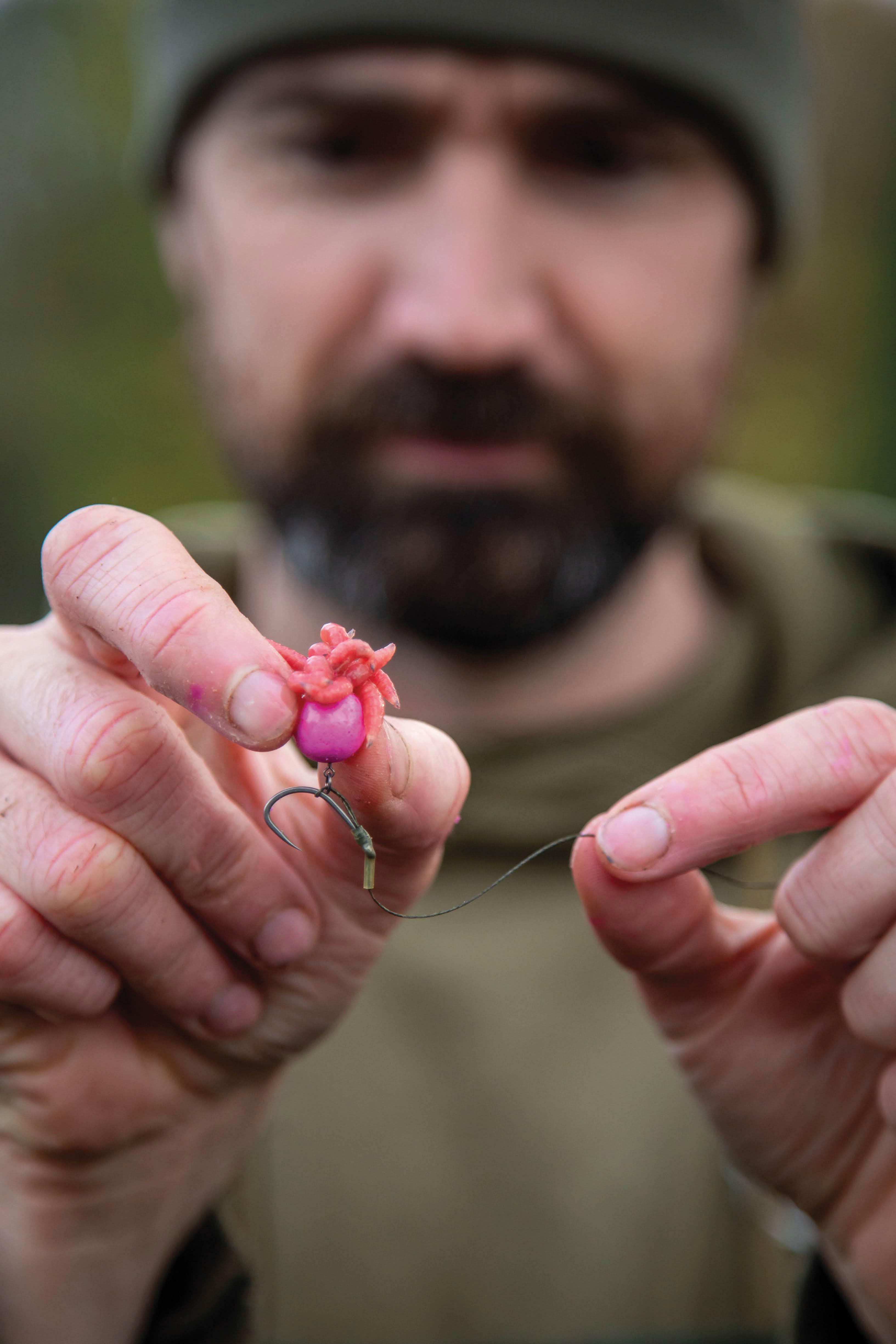
With all three rods out, I treated each presentation to a very small amount of crumbed Sticky Manilla Active, a few maggots and a tiny sprinkling of corn, no more than a dozen grains per rod. The crumb had been heavily soaked in matching Cloudy Liquid, to boost attraction without adding more food value. The crumb had also been passed through the crusher multiple times, to make it as fine as possible, and once again, to keep the food content down. After putting such a tiny amount of bait in, I’d not have to worry about ditching a spot and moving the rods around should I need to, and as was the case when I saw more bubbling out in front of the next swim, Rapscallions. I reeled in the pop-up rod and went round to investigate.
The bubbling was only a couple of rod-lengths out, so remaining as quiet as possible, I cast well past the spot, out into the lake, before quickly skipping the rig back. I then let it fall, slackened the line right off and laid the rod down. I was almost right on top of the activity, and I felt extremely confident, even more so when I had a savage liner half an hour later. I waited it out for another hour, but it all came to nothing and things quieted down.
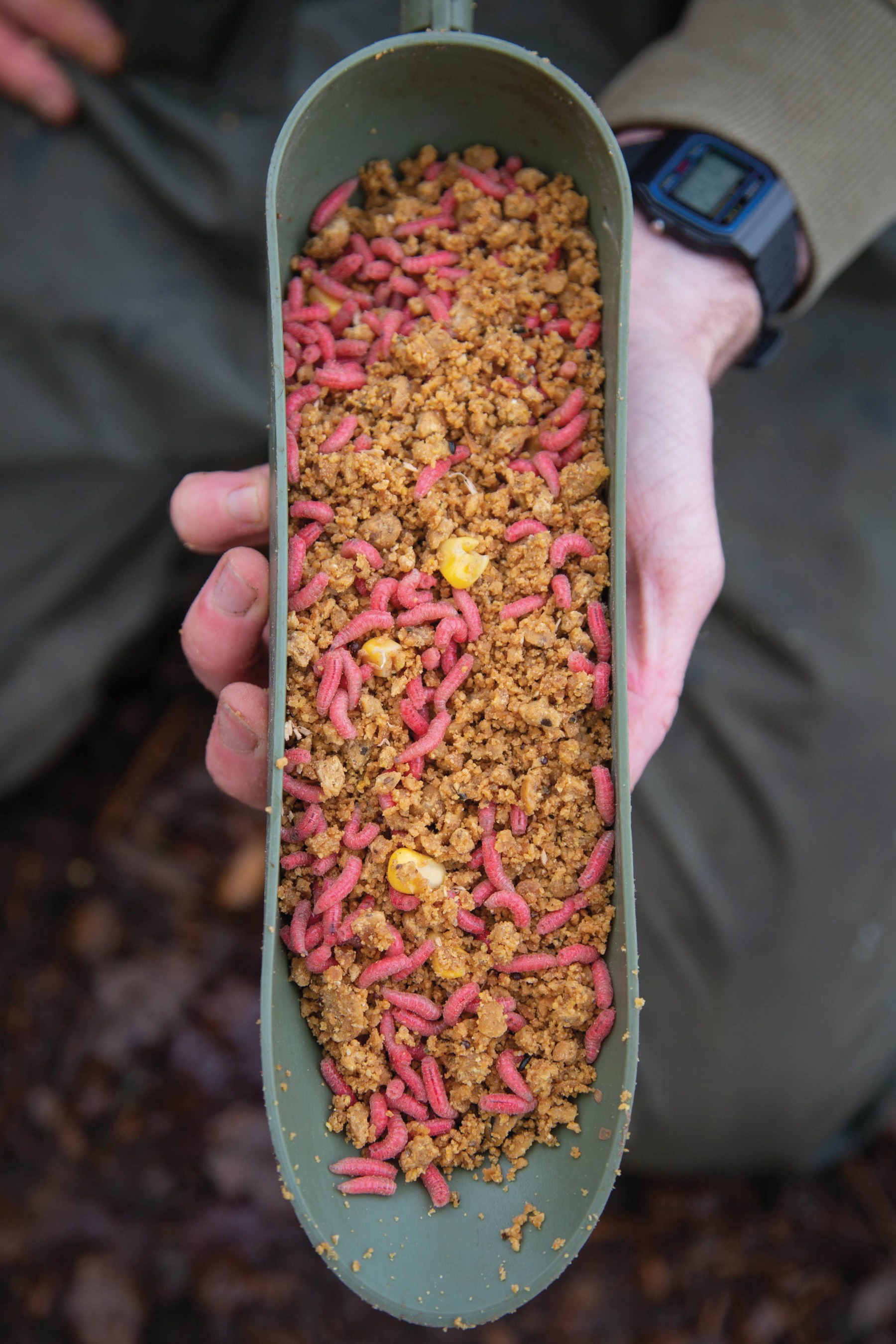
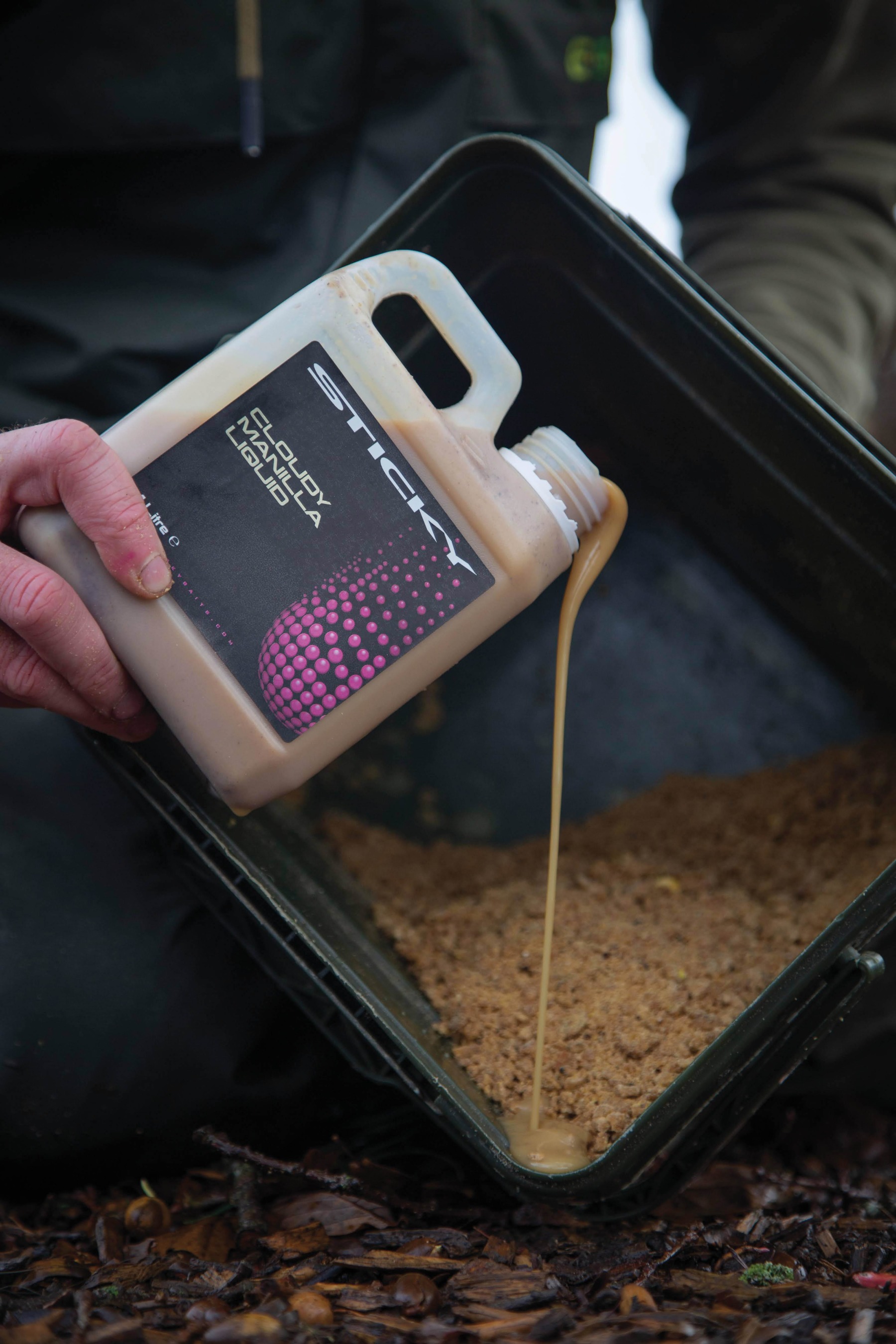
SEARCHING THEM OUT
Mid-morning came and went with no further signs of action. I had seen no more shows, bubblers or liners. Enough was enough. I went out to the island with two rods as I continued to persevere with the rod to the right. To the left-hand side of the island, I cast the Slip-D Rig with its pink pop-up, and I placed a wafter with a solid bag to the right-hand side. Again, I introduced a very small amount of bait over each hookbait, just to try and entice a fish to drop down. Having not fished the night, I had a little under 24hrs to winkle out a fish.
Given that I was fishing such a small, intimate lake, I was using heavy fluorocarbon main line to pin everything down on the deck, and around about lunchtime, I had a funny, bouncy take, the light bobbin hitting the rod blank before dropping down and then rising again. I then picked up the rod and leant into the first fish of the session.
I was back on my light, small-water set-up of 10ft ESP Oynx rods and Oynx Compact reels, and the fight proved great fun. It was clear that it wasn’t a massive fish, but any carp at this time of year was welcome. I played it gently to the net and slid the mesh under what looked like one of a few fish that had been stocked only recently. It was a lovely, mid-double linear, but it was like a block of ice as I held it for the photos. With a few snaps taken, the majestic stately home providing a suitable backdrop, I released the fish, keeping as much of my hands out of the ice-cold water as I possibly could. I’d had just a single fish, nevertheless I felt that my tactic was a winner, and so changed all three rods over to solid bags and 10mm pink wafters coated with the same Goo.
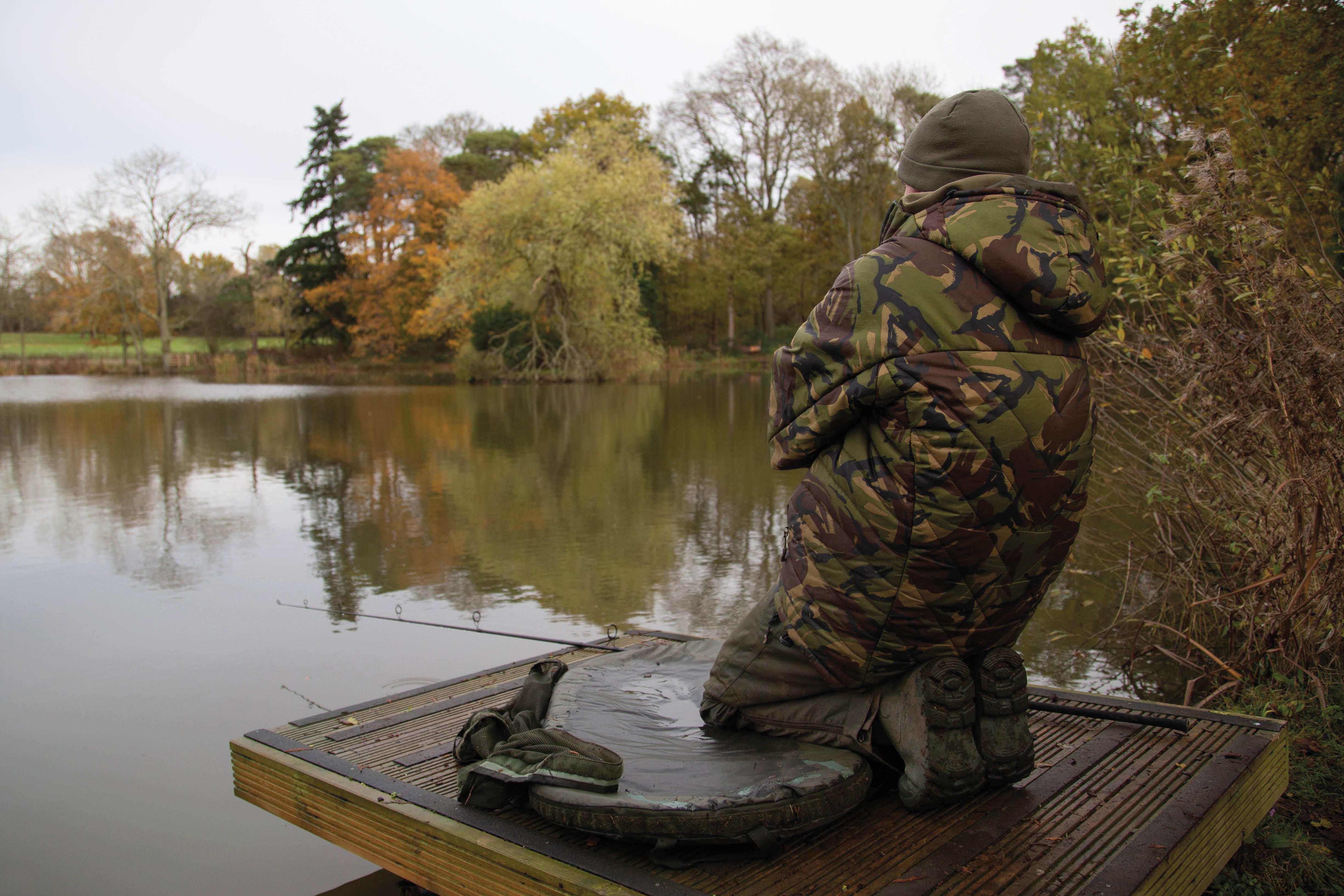
With all three rods back out, it took only another couple of hours before the same one was away again, a rattly, bouncing of the bobbin indicating that the second fish of the session was on. The fight was fairly similar to the first, another lively, double-figure carp charging around as it shook its head periodically.
Eventually, I slipped the net under a second mid-double, and remarkably, it was another from the most recent stocking. They were clearly settling into their new home and were still on the feed. This fish was different to the last, with a couple of heavily scaled patches, and a nice, orangey winter hue. After another quick photo, it was released back into the lake’s icy depths. Having had two bites in quick succession from the same spot, I moved a second rod to the vicinity. By this time, it was dark, and despite it being only early evening, I retreated quickly to the bag in an effort to stay warm.
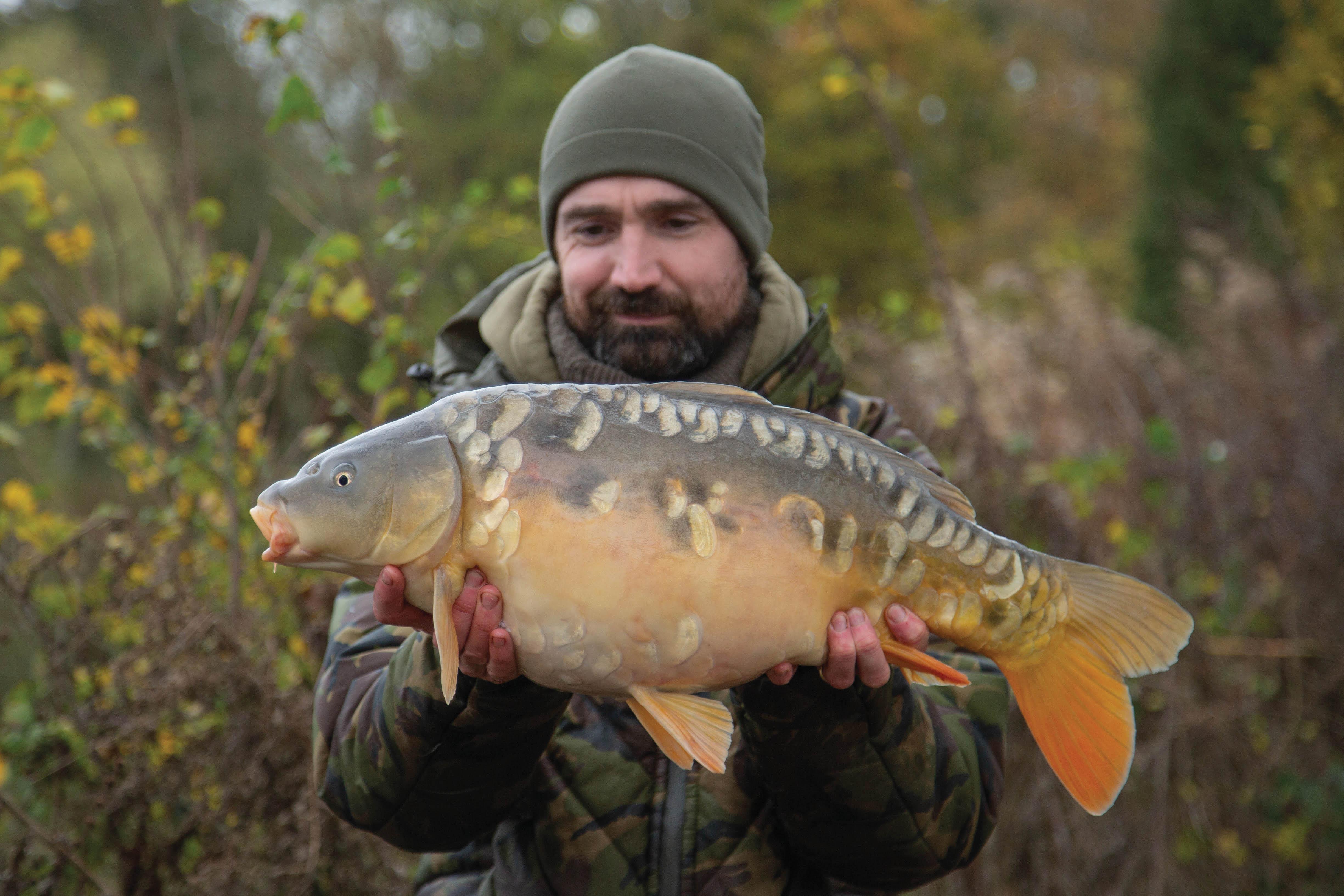
A NEW SPOT…
Around midnight, I heard a fish crash out to the left of the island. This was two nights in a row I had heard fish in that area. Earlier in the day, I had found a map detailing the lake’s depths, attached to the side of the toilet block. On the left-hand side of the island, there was a small depression in the lakebed, and this was surrounded by a slightly shallower, flat area. It dropped down to about six feet, but around it the water was six inches to a foot shallower. The rest of the lake was averaged three to four feet, I noted. Despite it being bitterly cold, I forced myself out of bed and got to work trying to find the feature. Eventually, I found what I believed to be the drop-off. The hole was only slightly deeper than the surrounding area, but it had to be worth a go, given that two fish had shown there on consecutive nights.
I wanted to redo all three rods, but just as I got the first one out, the rain that been falling started to pick up. Conditions, therefore, weren’t great for fishing solid bags, and as the rain fell harder, the strength of the wind increased. Within the hour, I was in the middle of a full-blown storm. The brolly was getting hammered, and the surrounding trees were creaking, but thankfully, due to the windbreak behind the swim, I felt safe and quite sheltered.
The storm raged all night, but as dawn approached, things started to calm down again. This was fortunate, as at this point, the left-hand rod, fished to the new spot, was away. Things weren’t as straightforward with this one when it came to playing the hooked fish, however. Very close to the spot was the snaggy, tree-lined margin. There was also a channel between the island and the bank for the fish to try and to get down. I applied maximum pressure in an effort to turn it and to get it to head back my way, constantly changing the angle of my rod as it went from the island margin to that of the far bank.
It wasn’t a massive fish, and so I managed to turn it and steer it back towards me without too much difficulty. Things remained far from simple, still, as it then tried to get its head into the left-hand marginal snags. About 20yd out, the reeds on the left became an issue. Again, I gave it maximum side strain, my rod tip held low to the water. The fish had managed to get to the edge of the reeds and I found myself having to pull it through the strands on the very extremities. If it made it into the reeds themselves, it would be gone. As I gave it an extra ounce or two of pressure, the reeds wobbled once more before finally, the fish popped out. It came ever closer before I then scooped up my third mid-double of the session. This one, however, was not one of the newer fish, rather a carp from the original stocking two years ago, a plump little fish with a single scale on one flank.
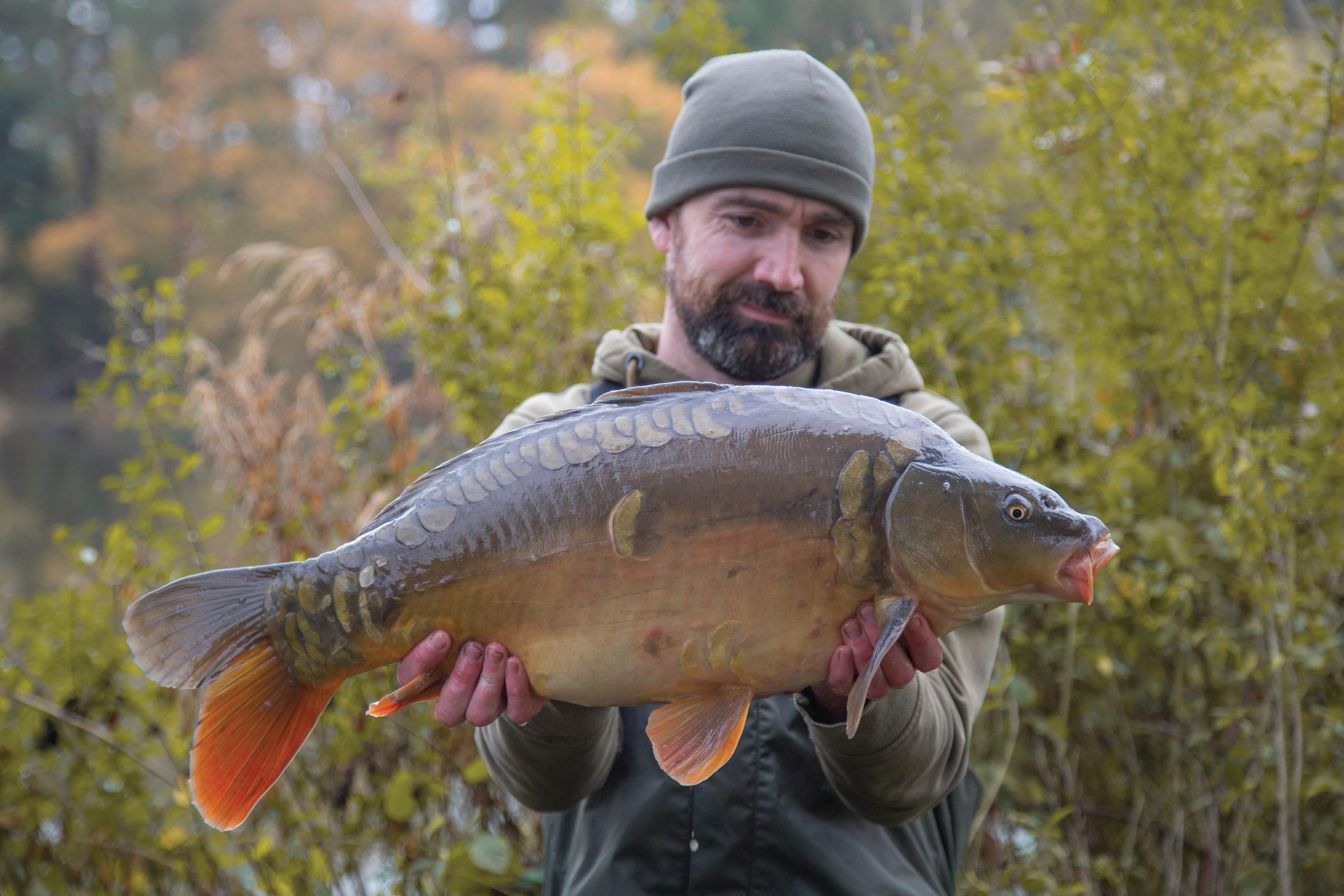
As the sun rose above the horizon, I fired up the kettle for the first time that day. With the house once again visible in the background, I enjoyed a cup of tea, accompanied by a customary and celebratory Bakewell tart. Having recently upgraded from your bog-standard Mr Kipling to those made by a baker I’d found on Instagram, @seanthechef1, I sampled his take on the traditional classic. It was the perfect way to start the day!
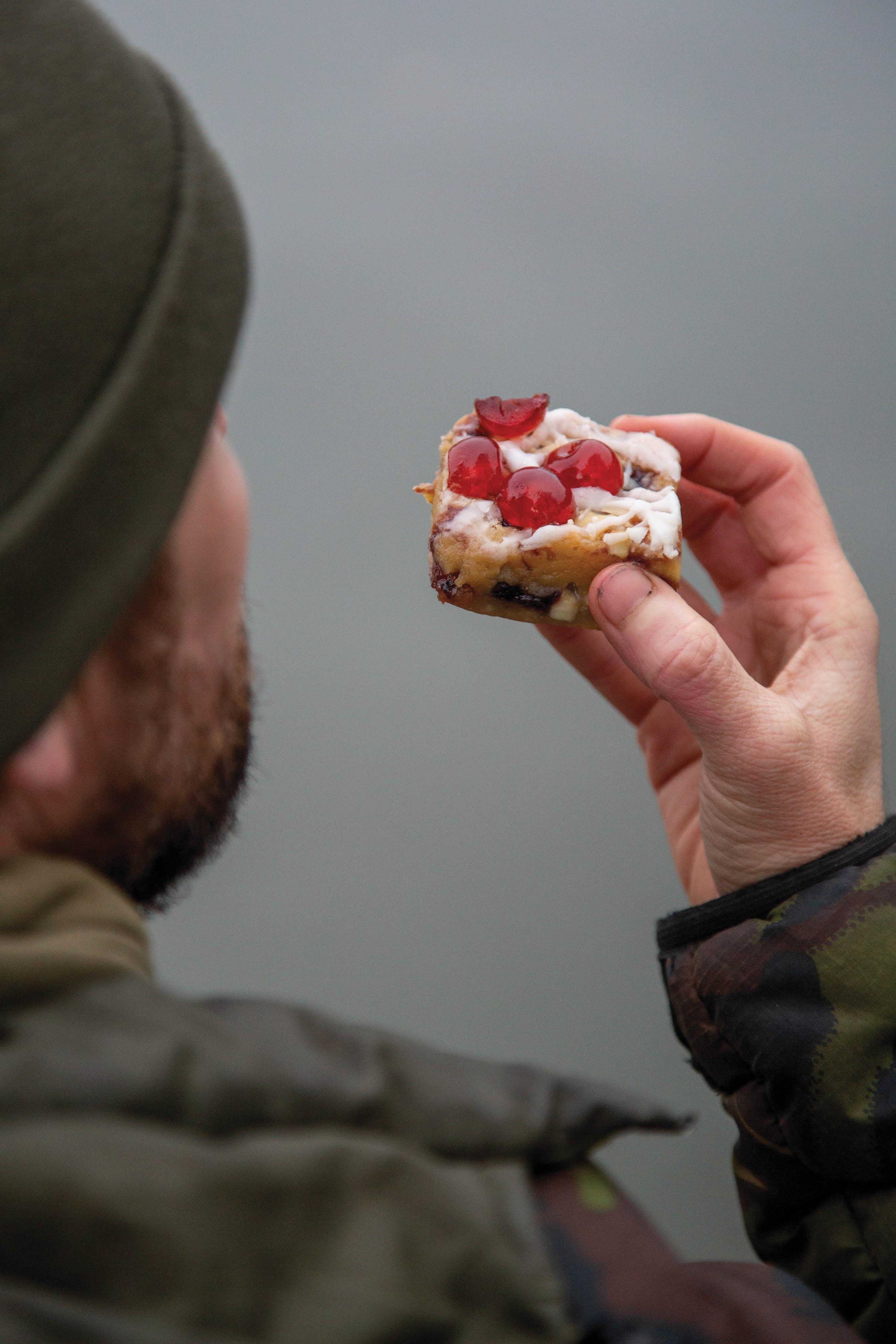
THE LAST FEW HOURS
Three fish at this time of year was fantastic going. During the winter, I often move away from specimen waters, preferring to target lakes with a larger stock. The stamp may not be as big on such waters, but with many more fish out in front of you, you have more chances of there being a hungry mouth near you to pick up your hookbait, and there is nothing better than a screaming Delkim to warm you up on a chilly winter’s day!
With only a couple of hours of the session left, I got the rod back out and started a very slow pack-down. The rain had stopped, but everything was soaked through and I wanted to give myself enough time to wipe it all down properly. I paused for a cup of tea, and Tom the cameraman popped over to join me. As we chatted about how well things had gone, despite the conditions, the bobbin on the re-cast rod, fished to the of the island, slowly pulled up towards the blank. It held there for an age and I couldn’t work out what was happening. As it crept forward an inch more, I lifted into it. Feeling little resistance, I pumped it all the way to the bank with ease. It felt very small, and I had visions of a massive estate-lake roach or something similar appearing. Playing it extra carefully, I found myself standing in a gap in the bankside vegetation to the right of the peg. Rather than being a clonking red fin, the fish turned out to be a little turbo-charged common.
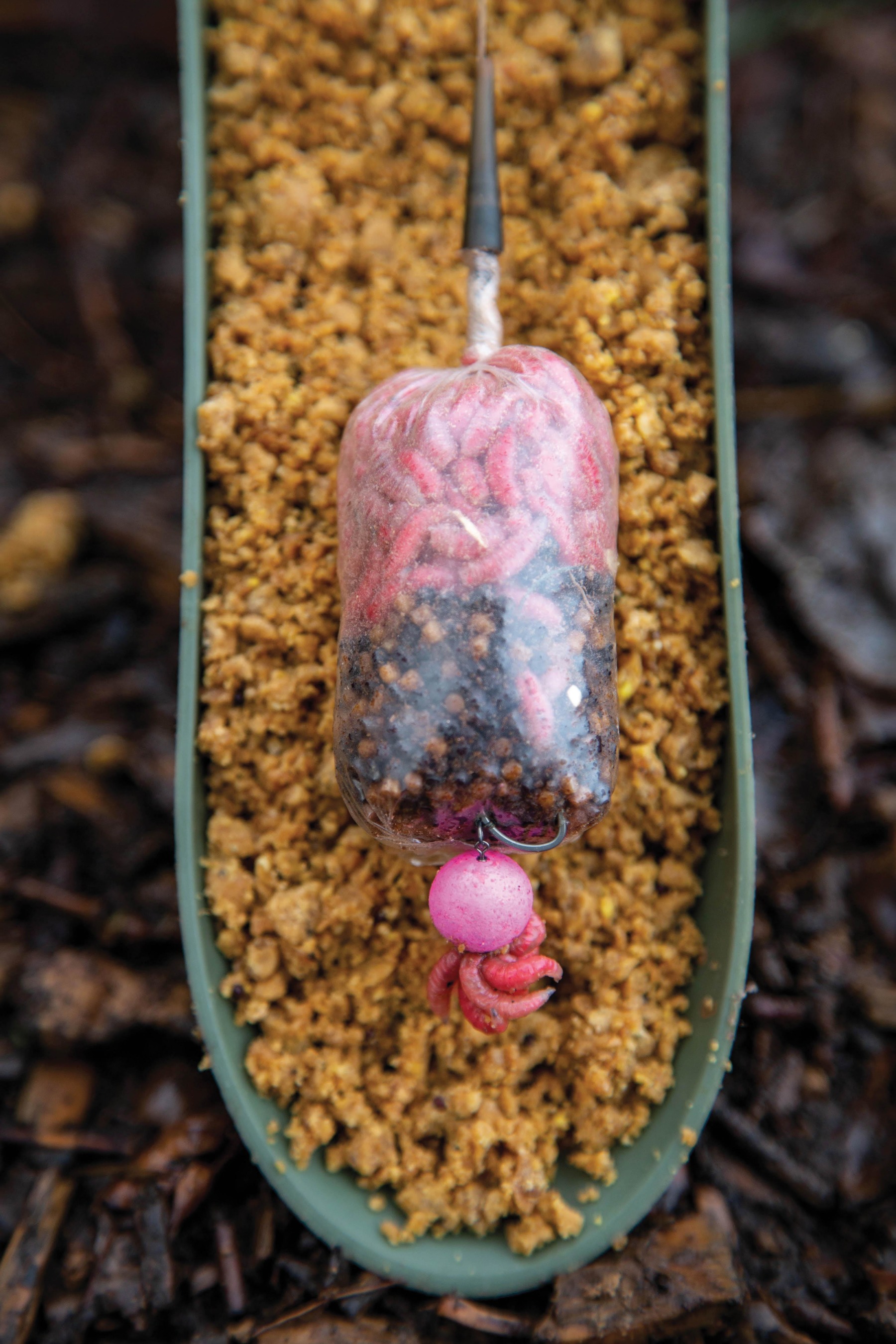
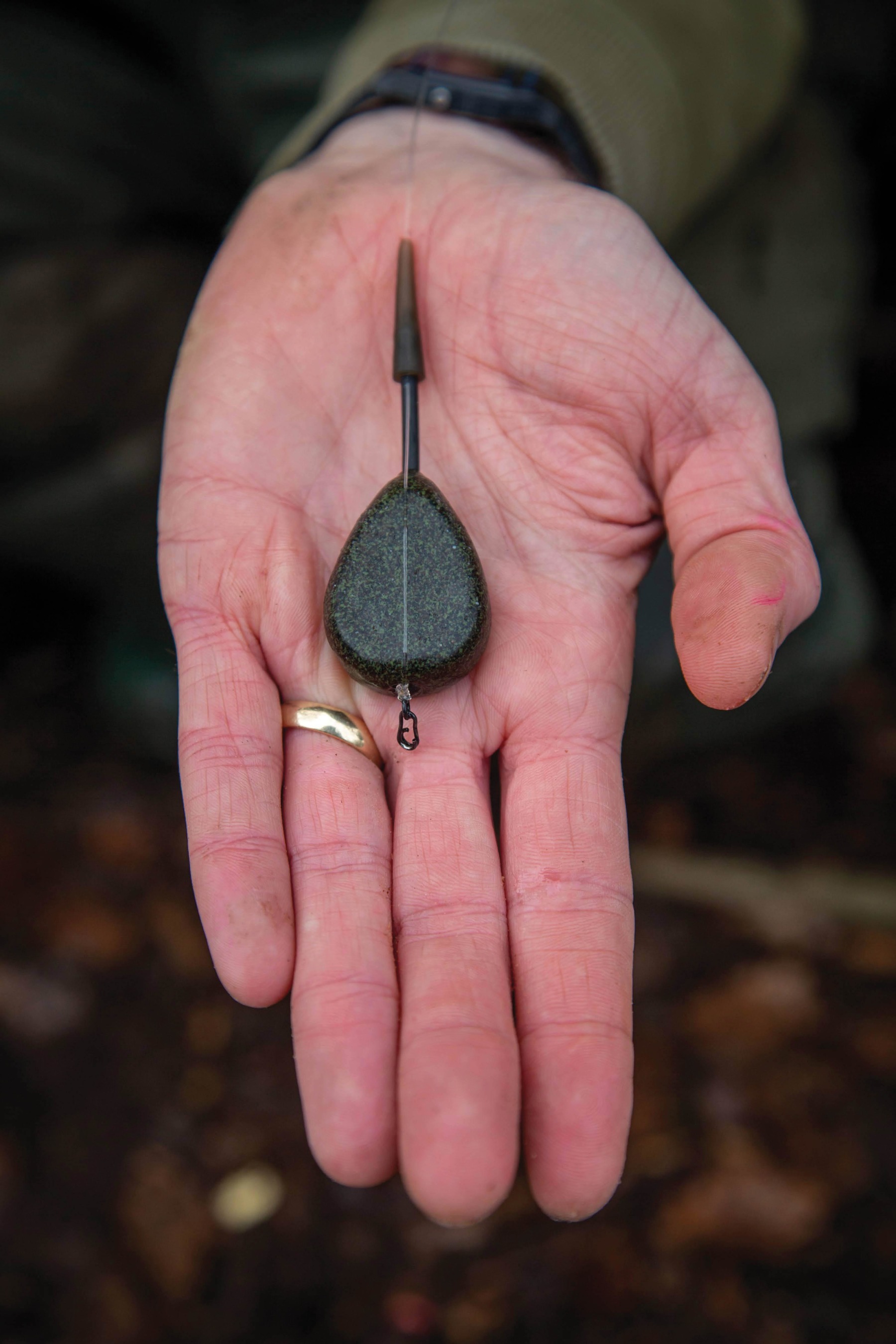
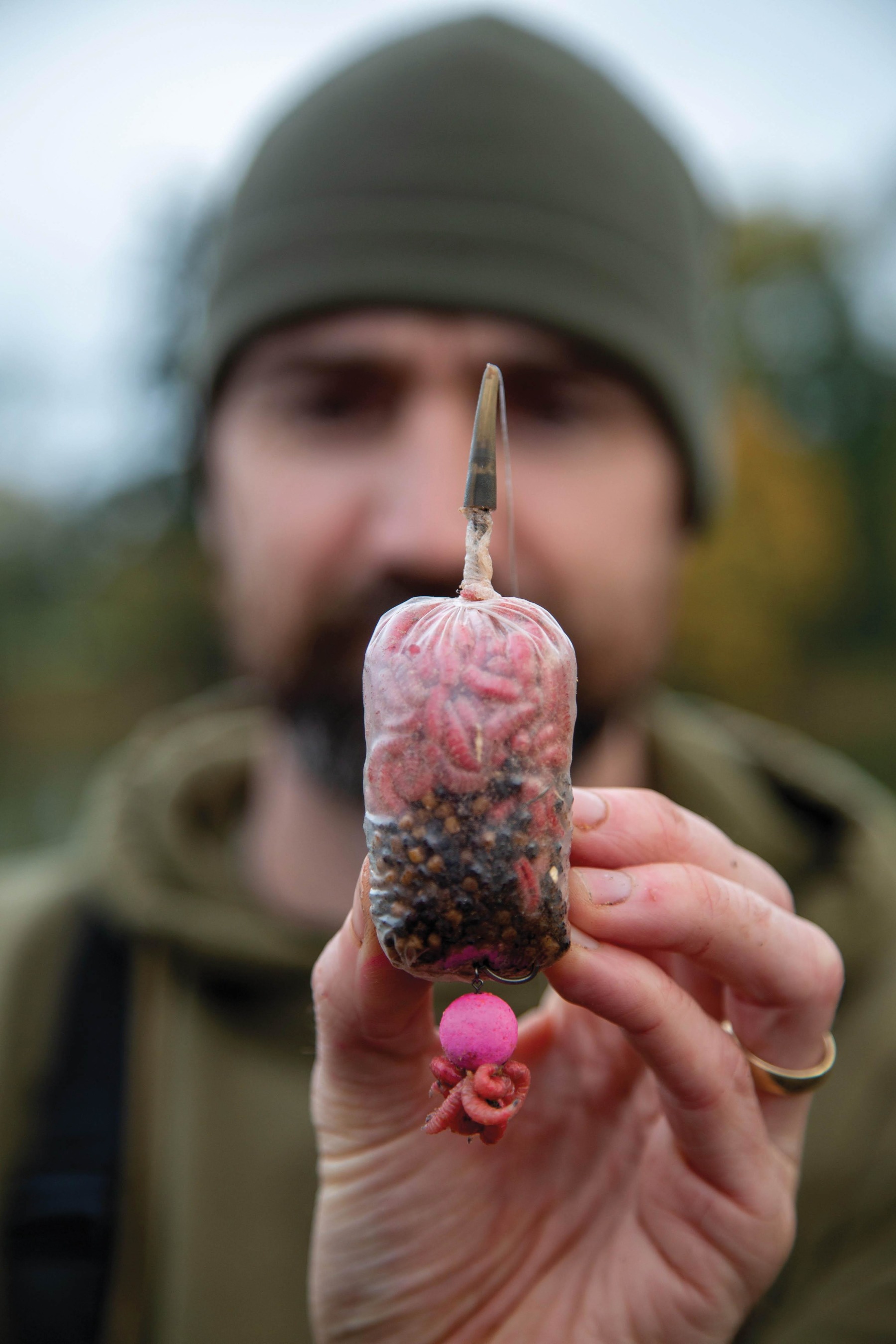
We took the carpiest picture possible before firing it off to the lake’s owner, Alan, so we could get his thoughts. He didn’t recognise the fish, however, and he confirmed that it hadn’t been part of any of the stockings. It was too young to be a wildie, and its origins remain a mystery. Fishing forever throws up little surprises.
The session had all but finished and I had thoroughly enjoyed myself. My gear was packed away, save for the rods. Tom had left a short while beforehand and was on his way home. I couldn’t believe it, then, when the left-hand rod signalled another take.
Again, a fraught battle ensued, the fishing having picked up a bait out by the island. I had to really give it the butt to gain any level of control. The fish felt a little bigger than those I’d had, and I believed it might prove to be the best of the trip. The same frantic toing and froing went on at the back of the reed bed, and once again I was fortunate to see it crash its way through and pop out the other side. I think the fact that the reeds had died was in my favour, as at the height of summer, the outcome may have been different. Eventually, I scooped up the final fish of the trip. It was indeed the largest, but only just.
With Tom having left, I balanced my camera on a couple of buckets and rattled off some self-takes. I then slipped the fish back and set about loading the barrow as I congratulated myself on a successful winter trip. It was at this point that I realised the tyre on my barrow had blown! It had been threatening to go for a while, and had finally given up the ghost. Luckily, I managed to track down a wheelbarrow on site. Ninety minutes and several sweaty trips later, I finally closed the gate of the otter fence behind me for the last time.
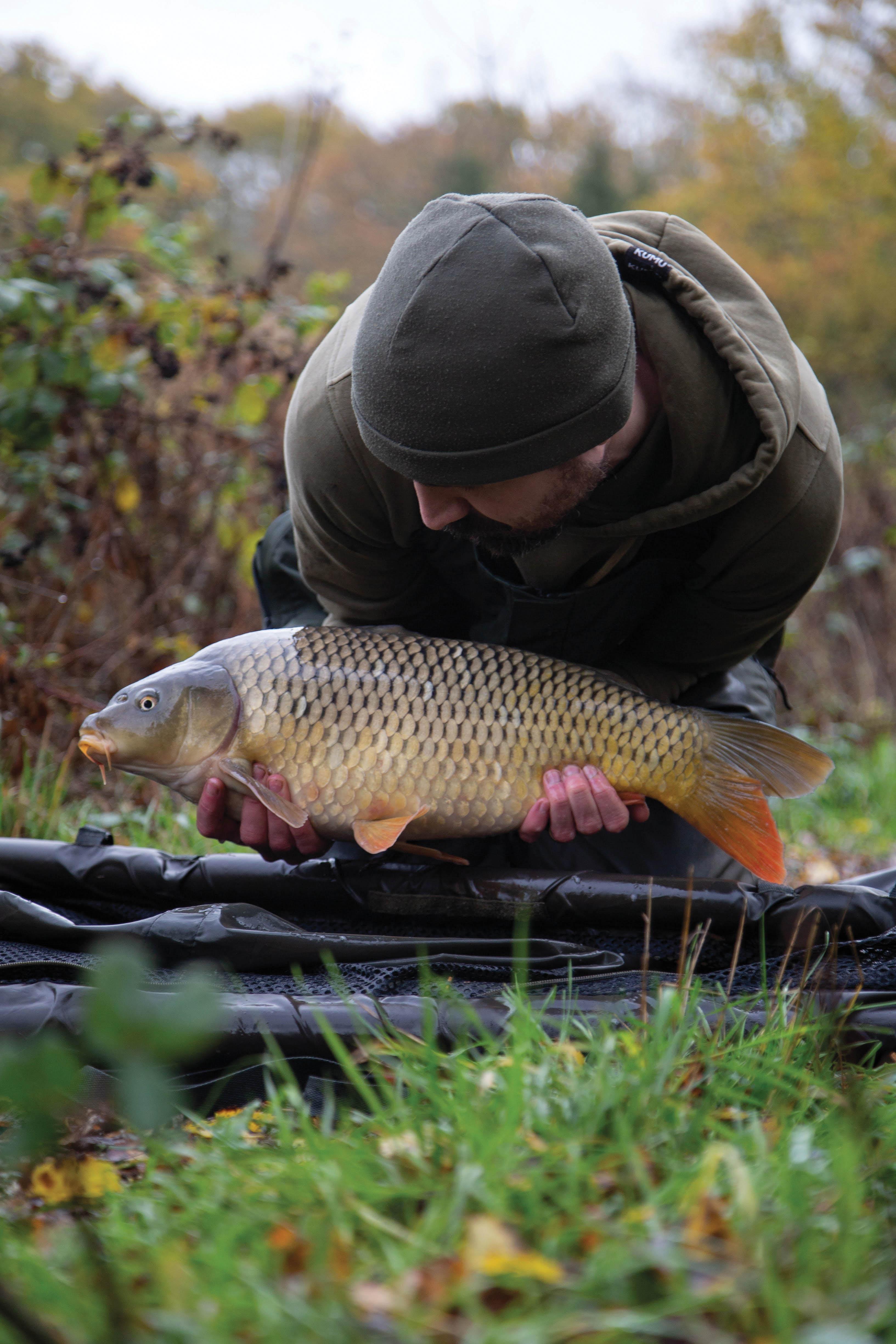
It been an excellent cold-water trip, and I had really enjoyed myself. The fishing was simple and straightforward, once I’d found them, and my surroundings had been unrivalled. I’m really looking forward to heading back to the water during the warmer months for another go at them.
WHAT WOULD I DO DIFFERENTLY NEXT TIME?
I wish I had spent time looking for that hole on the left-hand side of the island earlier. It did three fish in relatively quick succession and I think there were a few stacked up there. When I examined the map later, I found that there was actually another hole to the right of the island. Whilst I can’t be sure, this was probably where the other two bites came from, the fish obviously making the most of the deeper water there.
